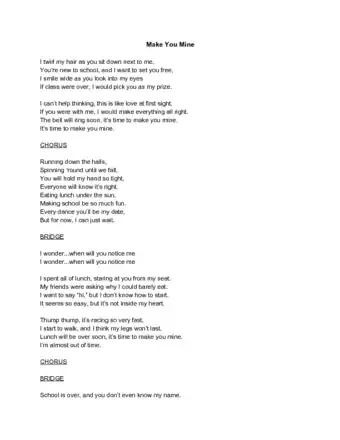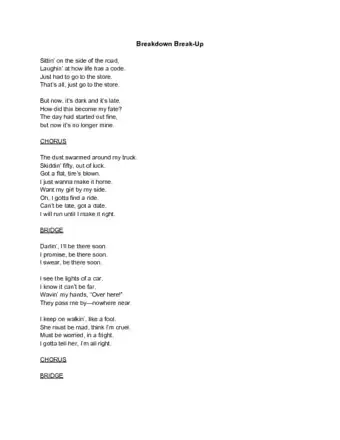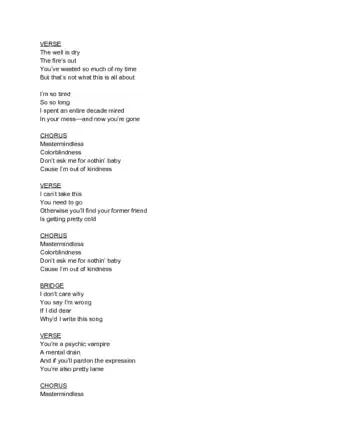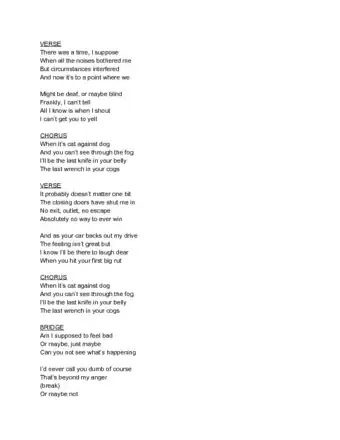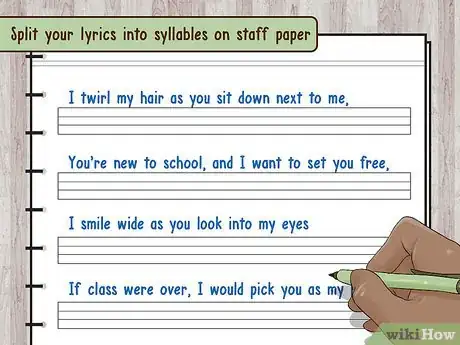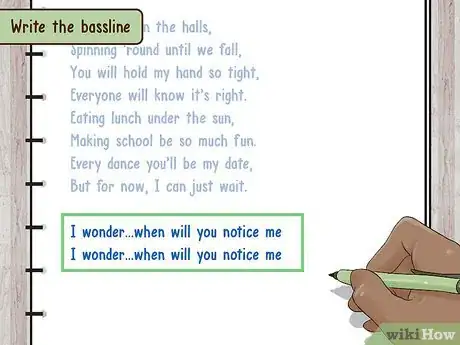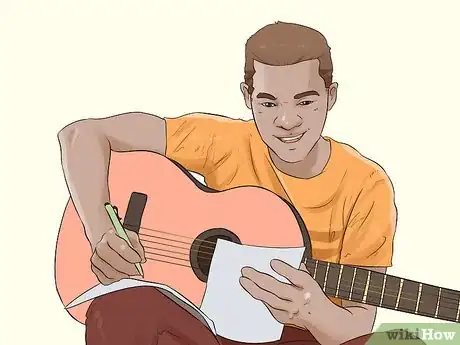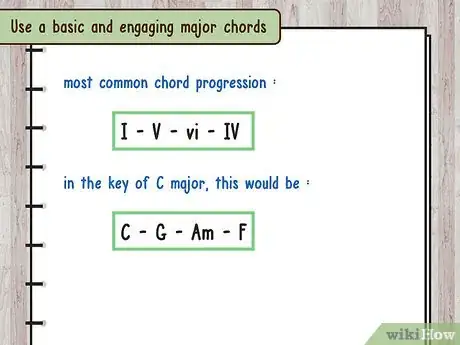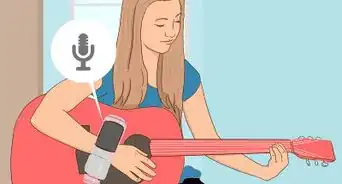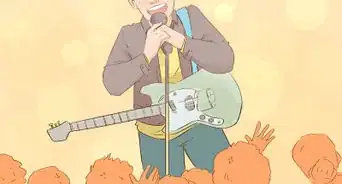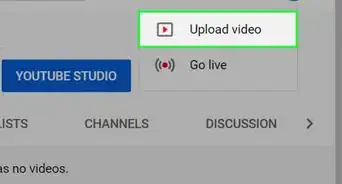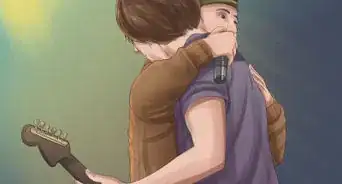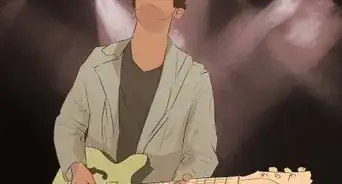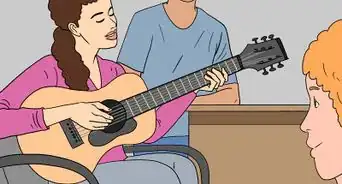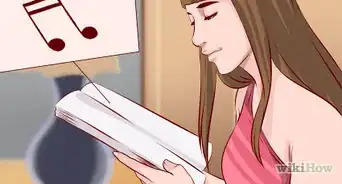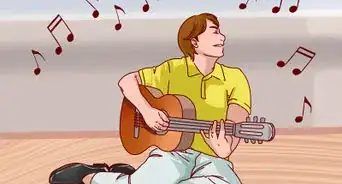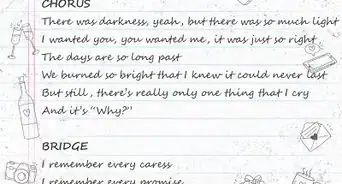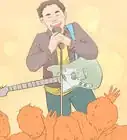This article was co-authored by Timothy Linetsky. Timothy Linetsky is a DJ, producer, and music educator that has been making music for over 15 years. He is a certified Ableton trainer and creates educational YouTube videos focused on producing electronic music. He has over 90,000 YouTube subscribers.
There are 15 references cited in this article, which can be found at the bottom of the page.
wikiHow marks an article as reader-approved once it receives enough positive feedback. In this case, 86% of readers who voted found the article helpful, earning it our reader-approved status.
This article has been viewed 322,594 times.
Writing a hit song is a labor of love. Many songwriters spend their careers trying to get into the top 10, but that doesn't mean you can't do it. With determination and effort, your song could be the next smash hit. Lay the groundwork by selecting a theme for your song and writing its lyrics. Compose a hit by following common trends, like ones in song speed and accompaniment. Push through roadblocks by trusting your instincts and using past songs as inspiration.
Things You Should Know
- Pick a theme that you'd like your hit song to revolve around, like romance, betrayal, loss, or hope. Write some engaging and timeless lyrics that really capture these feelings.
- Transfer your lyrics onto staff paper (or a DAW), and split them into syllables.
- Decide on a catchy tempo and bassline for your song first, followed by a melody that really hooks listeners in.
- Ground your song in major chords rather than minor chords, since songs in minor keys historically produce fewer hits.
Steps
Sample Songs
Laying the Groundwork
-
1Choose between digital or physical production. If you plan on writing out your song by hand, you'll need a pencil, eraser, and staff paper. Digital production will require a suitable computer and a Digital Audio Workstation (DAW), minimum.
- When building or buying a computer, choose one with a 3.0 dual core processor (or better), at least 8 GB of RAM, and no less than 500 GB of hard drive space.[1]
- Popular DAWs, which are excellent tools for home or independent production, include Ableton Live, Fruity Loops (FL) Studio, Steinberg Cubase Pro, and Apple Logic Pro.[2]
- Feel free to use whatever writing utensil you desire for physical production. However, as the song develops, you'll likely have to make adjustments or changes, so pencil is recommended.
EXPERT TIPTimothy Linetsky is a DJ, producer, and music educator that has been making music for over 15 years. He is a certified Ableton trainer and creates educational YouTube videos focused on producing electronic music. He has over 90,000 YouTube subscribers.Music Producer & Instructor
 Timothy Linetsky
Timothy Linetsky
Music Producer & InstructorWhile digital has a lot of power, there's something unique about every live sample. Timmy Linetsky, musician and producer, tells us: "For example, think about somebody playing a shaker. Every time somebody moves a shaker the sound is slightly different — every single time! It's very hard to digitally recreate the way the beads move around on the inside of a shaker, because the sound is so dynamic. It’s changing constantly, and it's difficult to create the randomness or simulate that character digitally."
-
2Select a theme. Tap into universal themes and emotions so anyone can connect with your song. Heartache is a common topic in hit music, but there are many other options, like falling in love, the feeling of a perfect day, betrayal, loss, and hope.[3]
- The theme of your song will guide you in the production of its lyrics and sound. These should align with the feelings and use words associated with your theme.
Advertisement -
3Draft lyrics that are timeless. Timeless lyrics will still be enjoyed even after a considerable time has passed. These kinds of lyrics also generally have a wide audience, which will improve your overall popularity with many different age groups.
- If your lyrics aren't catchy, you'll never be recognized as a hit songwriter. Look for lyrical inspiration in poetry, art (like exhibits at museums), and the natural world.[4]
- Some example of timeless hits from the 60s through the 70s include "Paint it Black" by The Rolling Stones, "Brown Eyed Girl" by Van Morrison, "Go Your Own Way" by Fleetwood Mac.
- Timeless hits from the 80s through the 2000s include "Don't Stop me Now" by Queen, "Don't Stop Believin' " by Journey, "Billy Jean" by Michael Jackson, "Smells like Teen Spirit," by Nirvana, and "Mr. Brightside" by the Killers.[5]
-
4Split your lyrics into syllables on staff paper. Alternatively, you can do this in your DAW if you've decided to produce your song digitally. By splitting your lyrics into syllables, you can be certain that each syllable gets a tone.
- Generally, each syllable of the lyrics will be assigned a tone (also called a "note"). In some situations, a single tone may be sustained for a few syllables or split into a run of tones, like sixteenth notes, for a single syllable.
- Even when you plan on sustaining a single tone for many syllables or beats, breaking up the lyrics into syllables will help you keep track of the rhythm of the song.
Composing a Hit
-
1Set the tempo. Tempo is a musical term that refers to the speed of the song. This is usually recorded in BPM (beats per minute). You can set the tempo with a metronome, though most DAWs come with a digital version of this tempo-keeping tool.[6]
- Although a hit can be nearly any tempo, most use one that is between 117 and 122 BPM. You may want to use this trend in to your advantage when writing your hit song.
- Do some research on the genre or kind of music you want to produce. Some kinds of songs have specific speed requirements, like the usual 90 BPM of ballads.[7]
-
2Write the bassline. The bassline is comprised of lower-tones and percussion, like drums and cymbals. This part of the song is generally simple and repetitive, but catchy. It should follow along with the pulse of your tempo.[8]
- Although percussion instruments tend to dominate the bassline, low-tone single notes, chords, and runs of notes can be added in with other instruments. Try doing this with a piano, guitar, or baritone.
- The bassline of your song should loop so that it plays through most of your song. This pattern may be adjusted at transitions, like where the verse switches to the chorus, solos, or at a musical bridge towards the end of the song.
-
3Design a catchy melody. The melody is the main through-line of the song. When you hum along with the main part of a song, you're humming the melody. In most cases, the melody is made up of a single instrument, a single voice, or a single instrument paired with a voice.[9]
- The melody of your song should complement and synchronize with the beat of the metronome and the bassline.
- Instruments frequently used for the melody include the piano, guitar, brass (like the trumpet or trombone), organs, synth tones, and more.
- Design your melody so it has contour. The natural rise and fall of tone throughout the melody, along with dynamic (volume) changes will make your melody more interesting to listeners.[10]
-
4Round out your song with accompaniment. Be sparing when adding more instruments to your song. On average, most hit songs have no more than seven instruments (including voices).[11] Too many instruments/voices can make your song distorted and unclear.
- If you're a novice songwriter, you may want to keep the number of accompanying music instruments (including voices) added at this point to two or three to prevent oversaturation and muddiness.
- Harmonize the accompanying instruments in chords. Use pleasing sounding arrangements of single-tone notes or runs of notes in the accompaniment.[12]
-
5Use a basic and engaging major chords. Although songs written in minor keys can be compelling, few rise to the top as hits.[13] Chord structure that is too complicated can overwhelm listeners. Stick to simple, archetypal patterns that contribute to the atmosphere of the song.[14]
- One common chord progression in hit songs is I – V – VIm – IV, as in: C – G – Am – F ; D – A – Bm – G ; A – E – F#m – D ; G – D – Em – C ; and E – B – C#m – A.
- There are many different chords to choose from and unique ways of putting chords together. Experiment with these to find what works best with your song.
-
6Showcase the important parts of your song. When you reach the end of a build or powerful lyrics, increase or decrease the dynamics (volume) correspondingly. Use an extra instrument or two to emphasize these parts of your song. Use rests (pauses) to increase tension.[15]
- Unusual sounds or samples can create an enjoyable surprise in your song. DJ Premier did this artfully by bringing out the drumline with a sample of birds chirping.[16]
Pushing through Roadblocks
-
1Trust your instincts. Even though many trends in hit music have been analyzed, no composer or researcher has figured out how to write a hit every time. Strong feelings usually convey potent messages to listeners, so using your feelings as a guide for writing your hit can be helpful.[17]
- Save drafts before making changes to your song. Some additions can make a song worse, in which case you might want to roll back the song to a previous version.
-
2Inspire yourself with songs from the past. Re-purpose themes, licks, and riffs from old music. Put your own spin on these and incorporate them into your own melody. Take inspiration from your favorite oldies or the classics. Revitalize forgotten hits of the past by creating your own song from them.[18]
- Avoid copying a song note for note, word for word, or even too closely. Doing so could be interpreted as plagiarism and could result in legal trouble.[19]
- Explore different avenues of inspiration. You may find that collaborating with another artist pushes you to make your best work.
-
3Be flexible. Trying to follow the rules too rigidly can stifle your creativity. It can also make your sound too stiff or lacking in fluidity. When brainstorming ideas for your song, be willing to try new things. You never know when an unexpected lyric or combination of sounds will occur to you.[20]
- Because music can be fickle, you might want to keep a physical notebook for ideas or take musical memos on your phone for ideas that pop into your head.
-
4Be persistent. When mining for gold, it can take quite a while before finding the motherload. In the same way, even talented songwriters write many songs before they strike upon a hit.[21] Train your song writing abilities by practicing writing songs as frequently as possible.
Community Q&A
-
QuestionHow can I get in touch with a producer to make a hit song?
 Community AnswerIt's hard to get in touch with a producer if you don't yet have a following. Put your song(s) on YouTube first. If they become popular enough, a producer might see them and set you on the path to fame.
Community AnswerIt's hard to get in touch with a producer if you don't yet have a following. Put your song(s) on YouTube first. If they become popular enough, a producer might see them and set you on the path to fame. -
QuestionWhat is the structure of a hit song?
 Community AnswerMost hit songs are structured: Verse / Pre-Chorus / Chorus / Verse / Pre-Chorus / Chorus / Bridge / Chorus, but these can be mixed up to suit your needs.
Community AnswerMost hit songs are structured: Verse / Pre-Chorus / Chorus / Verse / Pre-Chorus / Chorus / Bridge / Chorus, but these can be mixed up to suit your needs. -
QuestionIs it necessary to write a pre-chorus?
 Community AnswerStrong structure is largely fluid. Whatever style you want to use can be used. If you feel a pre-chorus isn't right for your song, feel free to leave it out.
Community AnswerStrong structure is largely fluid. Whatever style you want to use can be used. If you feel a pre-chorus isn't right for your song, feel free to leave it out.
References
- ↑ http://www.wirerealm.com/guides/top-10-best-computers-music-production
- ↑ http://www.musicradar.com/tuition/tech/the-20-best-daw-software-apps-in-the-world-today-238905
- ↑ http://www.independent.co.uk/arts-entertainment/music/features/ivor-novello-awards-2015-10-tips-from-nominees-on-how-to-write-a-hit-song-10250801.html
- ↑ http://www.songwriting.net/blog/how-to-write-a-hit-song
- ↑ http://poly-graph.co/timeless/
- ↑ http://www.musicreadingsavant.com/a-rough-guide-to-tempo-ranges-for-the-confused-musician/
- ↑ https://www.theguardian.com/music/musicblog/2011/jul/14/how-to-write-a-hit-song
- ↑ http://tweakheadz.com/hip-hop-beat-construction-made-easy-the-elements-of-a-beat-arranging-beats-orchestrating-beats-sound-creation-and-production-tips-for-hip-hop/
- ↑ https://www.britannica.com/art/melody
- ↑ http://edmprod.com/ultimate-melody-guide/
- ↑ https://music.tutsplus.com/articles/creating-a-pop-song-part-1-instrumentation--audio-15737
- ↑ http://tweakheadz.com/hip-hop-beat-construction-made-easy-the-elements-of-a-beat-arranging-beats-orchestrating-beats-sound-creation-and-production-tips-for-hip-hop/
- ↑ http://poly-graph.co/timeless/
- ↑ https://thornepalmer.wordpress.com/2011/12/29/the-10-most-used-chord-progressions-in-pop-and-rock-and-roll/
- ↑ http://tweakheadz.com/hip-hop-beat-construction-made-easy-the-elements-of-a-beat-arranging-beats-orchestrating-beats-sound-creation-and-production-tips-for-hip-hop/
- ↑ http://www.musicradar.com/tuition/tech/10-hip-hop-production-tips-431654
- ↑ https://www.theguardian.com/music/musicblog/2011/jul/14/how-to-write-a-hit-song
- ↑ https://www.mtv.com/news/ayzfrf/meghan-trainor-hit-song-formula
- ↑ http://info.legalzoom.com/long-can-sample-before-need-copyright-permission-27344.html
- ↑ http://www.independent.co.uk/arts-entertainment/music/features/ivor-novello-awards-2015-10-tips-from-nominees-on-how-to-write-a-hit-song-10250801.html
- ↑ https://www.theguardian.com/music/musicblog/2011/jul/14/how-to-write-a-hit-song
About This Article
To write a hit song, try to come up with lyrics that are timeless and that can apply to a wide audience across many age groups. Once you've written great lyrics, come up with a catchy melody, which is the part of your song that people will hum along to when they're listening. If you need some inspiration, try listening to some popular songs to see what made their melodies so special. As you're writing your song, remember that there's no guaranteed formula for making a hit, so don't be afraid to trust your instincts. To learn how to compose the music for your future hit song, scroll down!
